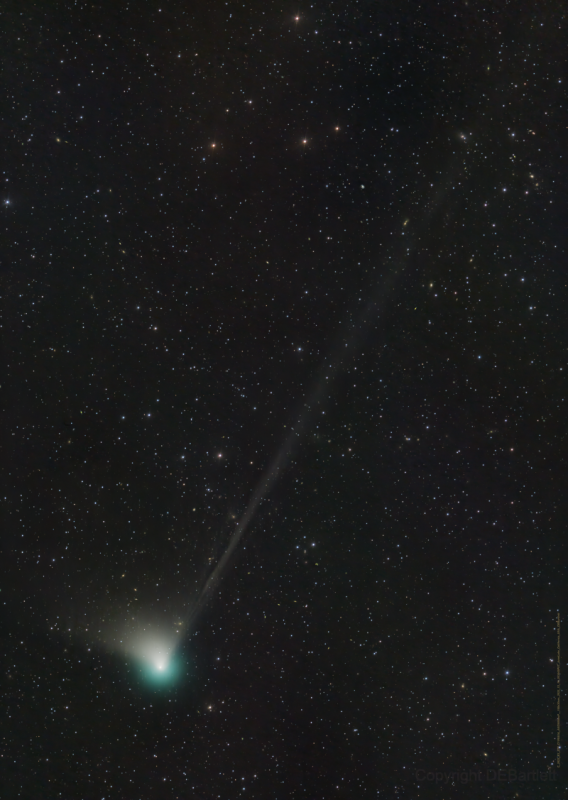Credit & Copyright: Dan Bartlett
Explanation:
Comet
C/2022 E3 (ZTF)
was discovered by astronomers using the wide-field survey camera at the
Zwicky Transient Facility this year in early March.
Since then the new
long-period
comet
has brightened substantially and is now
sweeping across the northern
constellation Corona Borealis in predawn skies.
It's still too dim to see without a telescope though.
But this fine telescopic image
from December 19 does show
the
comet's
brighter greenish coma, short broad dust tail, and long faint ion tail
stretching across a 2.5 degree wide field-of-view.
On a voyage through
the inner Solar System comet 2022 E3 will be
at perihelion,
its closest to the Sun, in the new year on January 12 and at
perigee, its closest to our fair planet, on February 1.
The brightness of comets is
notoriously
unpredictable, but by then C/2022 E3 (ZTF)
could become only just visible to the eye in dark night skies.
1999 2000 2001 2002 2003 2004 2005 2006 2007 2008 2009 2010 2011 2012 2013 2014 2015 2016 2017 2018 2019 2020 2021 2022 2023 2024 2025 |
Yanvar' Fevral' Mart Aprel' Mai Iyun' Iyul' Avgust Sentyabr' Oktyabr' Noyabr' Dekabr' |
NASA Web Site Statements, Warnings, and Disclaimers
NASA Official: Jay Norris. Specific rights apply.
A service of: LHEA at NASA / GSFC
& Michigan Tech. U.
|
Publikacii s klyuchevymi slovami:
comet - komety
Publikacii so slovami: comet - komety | |
Sm. takzhe:
Vse publikacii na tu zhe temu >> | |
